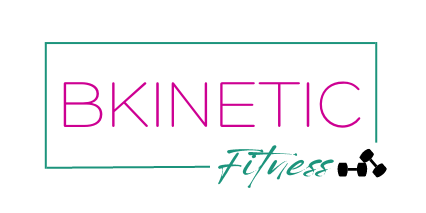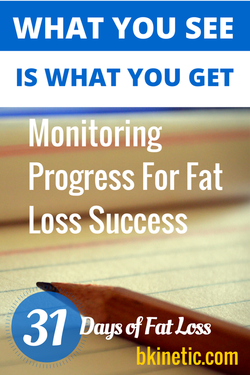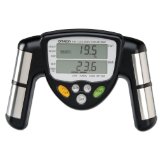We’ve all had those instances when we barely remember the drive into work. We’re like, How the heck did I get here? Our minds were on autopilot after doing it so many times. The same goes for a lot of food choices and activities. And that’s not a necessarily a bad thing, but it can spell disaster for our fat loss progress if we don’t use those powers for good.
Monitoring fosters self-awareness which can facilitate change. We can see patterns in our everyday lives that may escape our notice. And studies have shown that we all are really bad at accurately estimating our food intake and activity level. And not just by a little — up to 50% off in terms of underestimating calories in and overestimating calories out. So we may think we’re doing everything right (yet not seeing results), and in reality be making significant errors without realizing it.
It’s easy to lie to ourselves or trick ourselves into thinking that we are eating less and moving more than we really are. That has always been a struggle for me. Sometimes I’ll tell myself that this one extra snack or couple of bites of dessert won’t make a difference, and besides, I didn’t really eat much today, and don’t I need a little more protein today anyway? ;-P It’s a slippery slope, to be sure.
And monitoring applies to more than food journaling. It’s also helpful to track body composition changes, measurements, and workouts. This gives you tangible proof of how far you’ve come. Think of all those weeks when you felt like nothing was happening. That the image in the mirror today looks the same as the one a month ago. It’s nearly impossible to see changes in our own bodies when we see them every day. Those tiny little changes make a difference over time, but we can get discouraged if we can’t see them. Taking measurements and photos can show us those changes, motivating us and creating some momentum to keep going. And we could all use a little more of that, right?
For best results, it’s imperative that we use a methodical approach. We can’t afford to let our emotions get in the way of what actions we should be taking. I’ve seen it over and over. Panicked over a perceived lack of results, a person will cut out carbs, increase cardio to ridiculous levels, and lift until the cows come home. Sometimes more isn’t better and can be downright detrimental, not only to your fat loss, but also to your health.
Sometimes the culprit isn’t the workouts, it’s the diet. Or maybe it is the workouts — a lot of cardio and marathon weight workouts can increase appetite and cravings, causing you to overeat. Or you may not be losing fat or recovering from workouts very well because you’re not getting enough sleep.
It’s important to see what’s working and what’s not. We need to see those patterns that are not readily apparent to us day to day, whether it’s with our energy levels, our sleep quality, or eating habits. How do we really know what’s going on if we aren’t tracking?
Better to be anal for a few days than frustrated for years.
~ Leigh Peele, fat loss expert
Smartphone app (Lose It, My Fitness Pal, Cals & Macros, Nutrition)
Notebook and pen
Spreadsheets
Photos (body composition changes, food, selfies postworkout, ha!)
Body Composition:
Circumference Measurements
(click here to download a free tracker in PDF form)
* Use any kind of soft tape measure and pull snug around the largest part of each body part, except for the waist.
* Do not flex or suck stomach out or in
Body Fat %
* Use the same method (calipers, handheld bioimpedance device, hydrostatic weighing)
* Do it in the same conditions each time (time of day, amount of food and drinks consumed, before workouts)
* With the varying accuracy of each method, the most important thing is seeing a downward trend over time.
Weight
* Weigh once per week on the same scale, naked or wearing similar fitted clothing.
* Weigh in the morning right after waking and after using the bathroom, but before eating or drinking anything.
* Be aware of normal fluctuations (hydration level, food consumed, sodium intake, that time of the month, workout recovery process, certain meds, water retention)
* Take this number with a grain of salt! It is merely one data point to track, and not the end all, be all of progress. Even as you make changes in your body composition (lose fat, build muscle, even lose water), that number on the scale is going to go up and down, stay the same, up and down and so on. Ideally we’d like to see a downward trend over time, but in some cases, the number may go up as your measurements and body fat go down. Please don’t let this number dictate your mood. Try to stay emotionally detached (I know this is easier said than done).
Before & After Photos
One of the most difficult things for me to get a client to do is to take a “before” pic. It can feel uncomfortable to take photos as you are right now at the beginning of your fat loss phase. I’ve been there. But by taking baseline pics and then updates every 4 weeks or so, you can see the gradual changes come together in a more objective light. You don’t have to show anyone.
* Take a pic of your front, back, and side views in fitted clothing that shows your shape, such as a bra and undies or short shorts.
Food:
* Be as specific as possible — measurements, macros (protein, fat, carbs), fiber, water intake, time of day, etc.
* Try to note food as you eat it. Like I mentioned earlier, we are horrible at remembering what we’ve eaten, let alone amounts and measurements.
* If you’re a spreadsheets kind of person, check out this tracker from Tom Venuto at BurntheFatFeedtheMuscle.com.
* I’ve had good success with using smartphone apps like Lose It and My Fitness Pal, which allow you to scan barcodes (can’t get much easier than that!), look up thousands of foods (including restaurant, packaged, and whole foods), and input your own recipes.
* Once you get the hang of it, it takes just a few minutes each day and will become second nature.
Workouts:
(click here for a free workout tracker in PDF form)
* Having a plan in place allows you to make the most of your time in the gym and track PRs (personal records) <— celebrate these!
* Keep track of reps x weight x sets (which will give you your overall volume of the workout and for the week).
* This can help point out weak spots and keep you from getting into a rut and not challenging yourself enough to see progress.
* Take notes of how certain exercises feel, how you feel overall, date, time of day, any issues that come up, etc. to help avoid overtraining and injury.
* This will show you if you are being consistent enough to spur results.
Other:
Activity Trackers
* Fitbit, Jawbone UP, Mio, Garmin, and Basis are just a few of the options available.
* Can’t decide? Check out this article comparing the different ones here. It even mentions a service that allows you to try up to 5 trackers for a week for $25 (which then goes towards your purchase).
Journal
Moods
Sleep (duration and quality)
Energy
Stress
Goals & Action Steps
Clothing
Some women like to use a dress or pair of jeans to measure their progress.
Don’t stress about this process. You don’t have to do it forever. You may only need to track food for a few days or weeks, before transitioning to more “intuitive” way of eating. You’ll be better able to eyeball proper portion sizes and estimate macros within a reasonable range. I only track when I’m in fat loss mode or for a few days here and there to just make sure I’m getting enough protein.
The key is to make this work for you. If you try tracking your food and it just makes you feel neurotic or a bit obsessive, then try something else. If you’re making continual progress without tracking, then you may not need to track anything if you don’t want to. It’s all up to you. I’m just giving you some tools to help you build self-awareness to tackle your specific issues and habits/patterns. You know yourself best.


